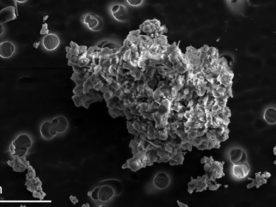Astronomers have detected swirls of diamonds, hundreds of thousands of times smaller than a grain of sand, in the protoplanetary or circumstellar disks of three baby star systems in the Milky Way – V892 Tau, HD 97048, and MWC 297.

The Robert C. Byrd Green Bank Telescope, a 100-meter diameter radio telescope located in Green Bank, West Virginia, USA. It is the largest fully steerable radio telescope in the world. (Wikimedia Commons)
After conducting a series of observations with the US National Science Foundation’s Green Bank Telescope in West Virginia and the Commonwealth Scientific and Industrial Research Organization’s (CSIRO) Australia Telescope Compact Array in New South Wales, the astronomers identified these so-called nanodiamonds as the source of a faint and mysterious microwave glow that has baffled scientists for nearly 20 years.
Called anomalous microwave emissions (AME) the odd glow has been spotted in regions throughout our galaxy.
The astronomers also found that infrared light coming from these three systems contains the distinctive signature of nanodiamonds.
Scientists think the tiny diamonds were probably formed from the superheated vapor of carbon atoms in highly energized star-forming regions of the Milky Way.
A study outlining the astronomer’s findings has been published in the journal, Nature.
























Comments are closed.